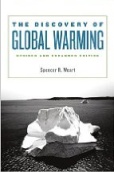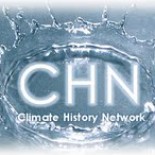Databases and Projects
Please contact sam.white@oberlin.edu for updates or to add your project to the list.
http://lwf.ncdc.noaa.gov/paleo/paleo.html
The National Oceanic and Atmospheric Agency provides extensive databases of climate data obtained through proxies. For medieval and early modern historians the tree-ring (dendro) data is probably the most useful. The site also provides links to published climate data based on historical records.

The Old World Drought Atlas, North American Drought Atlas, and Monsoon Asia Drought Atlas offer annual gridded reconstructions of dry/wet conditions based on networks of tree rings.
Tambora provides a database-supported infrastructure enabling the collaborative work on the interpretation of climate information derived from historical sources. The key information to be stored within the system is the original text quotation together with a bibliographic reference, place, time and coded information on climate and environment derived from the quote. The database has taken over information formerly in HISKILD (on early modern Germany) and is currently expanding.
The Japan Climate Data Project is building a database of documentary and early instrumental data on the weather and climate history of Japan and neighboring lands. The website also contains a full description of the current project, links, and publications based on its growing collections. Available in both in English and Japanese.
Institute for Ocean Technology’s (Canadian) Ice database.
Four freely accessible databases:
1. Newfoundland Ice Extent. Contains reconstructed ice charts for the ice months January to April from 1810 to 1958 for ice conditions off the east coast of Newfoundland and the Grand Banks. It also contains the original ice reports from which the charts were drawn, along with data tables of the latitude and longitude of iceberg and sea ice sightings and the estimated ice edge.
2. Gulf of St. Lawrence Sea Ice Extent. This database is similar to the Newfoundland Ice Extent with information for the months November through June and is complete with tables and graphs.
3. Ship Collisions with Icebergs. This database describes collisions which have taken place in the northern hemisphere over the last couple of hundred years, principally on the Grand Banks and North Atlantic but also includes the waters of Alaska, Greenland and the Arctic.
4. Iceberg sightings. this database compiles all the recorded iceberg sightings since the late 1800s.
The National Center for Atmospheric Research (NCAR) has launched a tool for searching and evaluating climate data sets. NCAR explains the Climate Data Guide as “the go-to source for scientifically sound information and advice on the strengths, limitations, and applications of climate data. Experts who construct, evaluate, and compare climate data sets contribute their perspectives and advice on climate data and analysis methods for a broad community of data users. Users may participate by posting comments, questions, and links.” For now, there are only a few datasets going back more than a century, so it has limited use for historians. However, the searchability and clear evaluations of data make it a valuable tool for non-specialists.
Climates of Migration: http://www.environmentandsociety.org/mml/climates-migration
The three-year research project Climates of Migration is a common project of The Rachel Carson Center for Environment and Society and the Institute for Advanced Study in the Humanities in Essen (KWI), funded by the German federal Ministry of Education and Research. The project looks at the historical intersections between environmental change and migration and is particularly interested in climate-induced movements of people in the past.
“The Deutscher Wetterdienst operates Germany’s densest meteorological and climatological observing network, in which data have been collected for many decades now for further processing and archiving. This is how about 100 billion climate data entries were gathered, partly in time series dating back to the 18th century. In addition, the DWD hosts several transnational and global data centres resulting from various international agreements.” (From the website)
![]() http://glaciers.uoregon.edu/index.html
http://glaciers.uoregon.edu/index.html
A website by Mark Carey at the University of Oregon for global information and resources related to glaciers hazards, climate change, and water.
Within the website, users can access a glacier hazards bibliography, resources and links, and a K-12 education portal. In addition to these resources, the website features information on glacier hazards, climate change, and water-use research in the Andes.
 http://www.ucm.es/info/cliwoc/
http://www.ucm.es/info/cliwoc/
The Climatological Database for the World’s Oceans (CLIWOC) reconstructs daily weather 1750-1850 based on ship logs.
Old Weather aims to recover worldwide weather observations to help improve climate model predictions. It is currently (03/2014) looking for volunteers to transcribe ship logs.
![]() http://www.ucm.es/info/reclido/es/home-es.htm
http://www.ucm.es/info/reclido/es/home-es.htm
Red Española de Reconstrucción Climática a Partir de Fuentes Documentales (RECLIDO) includes historical climatology databases and projects covering medieval and early modern Spain.
Lake Ice Climatic Atlas for the Great Lakes 1973-2002
As part of a joint United States-Canada initiative, the National Oceanic and Atmospheric Administration’s Great Lakes Environmental Research Laboratory (NOAA GLERL) combined the Canadian Ice Service Great Lakes Regional Charts with the U.S. National Ice Center (NIC) weekly charts to produce a digital database and ice cover climatology (ice charts of dates of first/last ice and ice duration, computer animations of the seasonal progression of ice cover for each winter, weekly statistical ice charts.) The GLERL database is the foundation for this atlas, which charts the distribution of ice on the Great Lakes since 1973.
The South Eastern Australian Recent Climate History (SEARCH) project is an interdisciplinary initiative to reconstruct the past 200-500 years of climate in SE Australia led by researchers from the University of Melbourne’s School of Earth Sciences.
 http://www.wsu.hist.unibe.ch/index.php
http://www.wsu.hist.unibe.ch/index.php
Universität Bern Historisches Institut Abteilung for Wirtschafts-, Sozial- und Umweltgeschichte contains links to articles on historical climatology, and the webpages of Christian Pfister and Christian Rohr.
![]() http://www.carsoncenter.uni-muenchen.de/index.html
http://www.carsoncenter.uni-muenchen.de/index.html
The Rachel Carson Center for Environment and Society at the Ludwigs-Maximilians-Universität München hosts scholars and promotes research in environmental history. The center is currently engaged in a new project that looks at the historical intersections of climate change and environmental migrations.
The international Atmospheric Circulation Reconstructions over the Earth (ACRE) initiative both undertakes and facilitates the recovery of historical instrumental surface terrestrial and marine global weather observations to underpin 4D weather reconstructions (reanalyses) spanning the last 200-250 years for climate applications and impacts needs worldwide.
http://www.environmentandsociety.org/
The Environment & Society Portal is a nonprofit education and research project that aims to make environmental humanities materials freely and openly accessible. The site features a searchable atlas, timeline, and database of environmental events and topics, including weather events and natural disasters.
http://artsandsciences.sc.edu/geog/research/climatelab/historical/historical4.html
This page introduces University of South Carolina projects in historical climatology, managed by Cary Mock. Research focuses on historical weather, climate reconstructions, and impacts since the late 18th century, employing collaborations of historians, geographers and climatologists, combining high-resolution written and proxy records.
Includes links to paleoclimate and instrumental data used in climate reconstructions, as well as information about the center and its academic programs.
 http://www.aip.org/history/climate/index.htm
http://www.aip.org/history/climate/index.htm
“A hypertext history of how scientists came to (partly) understand what people are doing to cause climate change. This Website created by Spencer Weart supplements his much shorter book, which tells the history of climate change research as a single story. On this Website you will find a more complete history in dozens of essays on separate topics, occasionally updated.”
http://www.volcano.si.edu/search_volcano.cfm
A searchable database describing the physical characteristics of Holocene volcanoes and their eruptions.
 http://www.environmentalsciencedegree.com/climate-change/
http://www.environmentalsciencedegree.com/climate-change/
This extensive list of links will hopefully include any important sites I have forgotten here…











